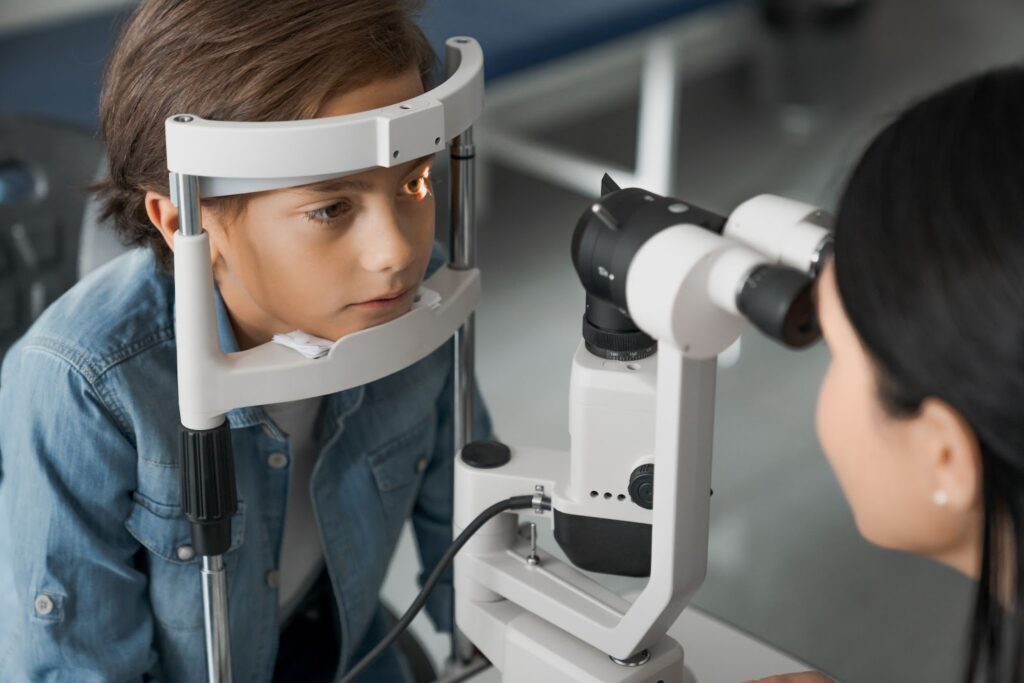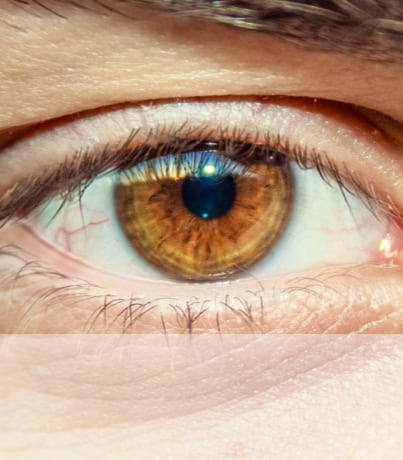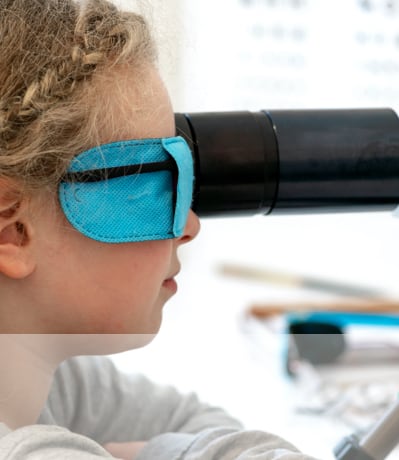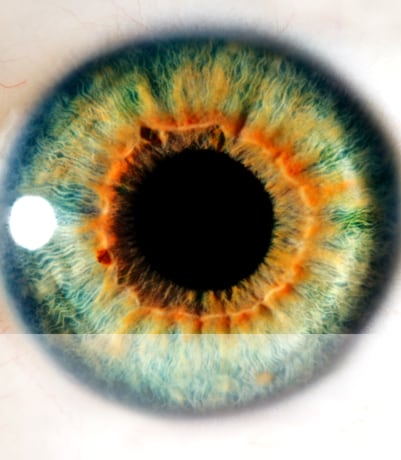If you or your child is experiencing myopia, you’re not alone. Many parents share concerns about their child’s vision, especially if they notice them squinting to see distant objects or straining to read from afar. You might find yourself wondering if this is just a phase, or something more significant.
Unfortunately, there is currently no definitive method to reverse myopia, but various management options can help slow its progression and improve your child’s future vision. For adults with myopia, you can still enjoy clear sight with glasses, contacts, or laser eye surgery.
What Is Myopia?
Myopia, also known as nearsightedness, is a refractive error that affects how light passes through the eye, leading to blurry vision for distant objects. In a healthy eye, light enters through the cornea, moves through the lens, and is focused onto the retina at the back of the eye. For people with myopia, the eyeball is elongated or the cornea is overly curved, causing light to focus in front of the retina instead of directly on it.
The retina contains millions of light-sensitive cells known as rods and cones, which convert incoming light into electrical signals. These signals travel through the optic nerve to the brain, where they are interpreted as images. When light doesn’t focus directly on the retina, it can cause blurry vision.
Nearsightedness affects people of all ages. It’s estimated that 30% of the U.S. population currently has myopia. Myopia commonly develops in childhood, and can progressively worsen until around the age of 20. It’s essential to monitor your child’s vision, as severe myopia may not only hinder vision, but also elevates the risk of severe complications, including:
- Cataracts
- Glaucoma
- Macular degeneration
- Retinal detachment
The prevalence of myopia has been steadily increasing, with some estimates predicting that half of the global population could be myopic by 2050.
Treating Myopia
The big question remains—can myopia be reversed? While there’s no magic cure, we can correct the blurriness associated with myopia and slow the condition’s progression in children.
Myopia management focuses on strategies to slow the progression of nearsightedness and improve visual health. Common approaches like glasses and contact lenses can provide clear vision and are excellent options for adults whose myopia has already stabilized. However, these options do little to impede your child’s myopia from progressing.
That’s why myopia management makes use of specialized strategies to help children reduce their risk of developing high myopia. Some treatments may include:
- Atropine eye drops: Low-dose atropine (typically 0.01%) helps relax the eye’s focusing mechanism, reducing strain and slowing the eyeball’s elongation—though your child will still need to wear corrective lenses. These drops are usually applied before bedtime.
- Orthokeratology (ortho-k): CRT or Moonlenses area form of orthokeratology that involves wearing specially designed contact lenses overnight to temporarily reshape the cornea. This non-surgical method allows for clear vision during the day without glasses or contacts. While Ortho-k lenses don’t reverse myopia, it can significantly slow its progression.
- Multifocal glasses & contacts: Multifocal lenses have different zones for near and distance vision, reducing eye strain and slowing myopia progression. Coopervision’s MiSight lenses are currently the only soft daily contact lenses that are FDA approved for myopia management.
Eyes can grow rapidly while children are young, so starting treatment early often yields better outcomes, as myopia has less time to progress unimpeded. Though these treatments don’t cure myopia, they do help protect your child’s vision.

Other Ways to Correct Myopia in Adults
While managing myopia in children focuses on slowing its progression, most adults’ vision has stabilized, opening up several additional options for correcting myopia.
Glasses and contact lenses are the most common ways to correct myopia. They work by adjusting the focus of light entering the eye, allowing for clear distance vision. With advances in lens technology and new fresh styles dropping all the time, there are many corrective options available to suit your lifestyle.
For those seeking a more permanent solution, laser eye surgery can be an excellent option. Procedures like LASIK use lasers to reshape the cornea, correcting the way it focuses light onto the retina. While not everyone is a candidate for laser eye surgery, the procedure can provide lasting results for many people.
Recognizing the Signs of Myopia
Early detection of myopia is crucial, and that means recognizing myopia symptoms when you see them. Children often have difficulty expressing their vision problems because they may not have the right words to describe what they’re experiencing. They might also think their blurry view of the world is how everyone sees it.
Myopia often appears during school years, and early symptoms can impact a child’s education. Here are some signs to look out for that might indicate your child is dealing with a vision problem:
- Frequent squinting or blinking
- Complaints of eye fatigue or discomfort
- Difficulty focusing on visual tasks
- Holding reading materials unusually close
- Covering one eye while reading
- A short attention span during visual activities
- Expressing difficulties seeing the whiteboard clearly
- Rubbing their eyes frequently
It’s crucial to get regular comprehensive eye exams. This proactive approach allows your optometrist to monitor your child’s vision development and identify any issues.
We’ve Got Your Back Against Myopia
Don’t wait for myopia to impact you or your child’s quality of life any longer. At Bettner Vision, our team is dedicated to providing personalized care tailored to your family’s unique needs. We understand the importance of early intervention and effective management strategies—and we’re ready to go to work for you!
Visit us today and take the first step towards clearer vision. Together, we can develop a comprehensive plan to address myopia and support healthy eyes for years to come.Your journey to better sight starts here—book your appointment now!








